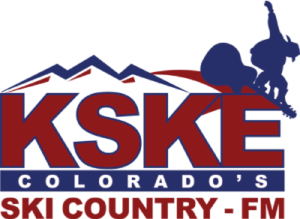The U.S. Bureau of Land Management has declined to accept a proposal to expand the Mid-Continent Quarry above Glenwood Springs, saying the plan lacks specifics in several key areas.
Rocky Mountain Resources, owner of the limestone quarry north of Glenwood Springs, submitted its proposal in November. But, in a letter sent to Rocky Mountain Resources on Friday, the Bureau of Land Management listed 73 areas where the plan of operations did not provide enough detail.
Bureau of Land Management area spokesman David Boyd said, “at this point, we are reviewing the proposal for completeness, not evaluating the proposal itself.”
A copy of the letter obtained by the Post Independent lists specific sections of the proposal that need to be addressed before the plan is complete and ready for formal review.
More specifics
The letter lists 73 items and asks Rocky Mountain Resources for clarification or detail on specific parts of the proposal. The letter also asks Rocky Mountain Resources for revisions: description of proposed measures for noxious weed control, specifics on Rocky Mountain Resources’ intent to drill exploratory holes to determine the depth of the limestone bed, and to depict the proposed fencing perimeter on the map.
Recommended Stories For You
Rocky Mountain Resources intends to extract rock by strip mining in a series of “benches,” starting at the top of the hill and working down to the current quarry operations. Each bench would have berms at least 25 feet high that Rocky Mountain Resources says would limit dust and block the scar from sight, at least for parts of the city.
The Bureau of Land Management requested more information on the benches, including the precise size, and how all the mining operations would fit there.
The proposed quarry expansion would include operations 24 hours a day, seven days a week, with blasting happening only between 9 a.m. and 4 p.m., crushing, hauling and processing from 6 a.m. to 6 p.m. and a midnight maintenance and security shift from 6 p.m. to 6 a.m.
The rock would be transported to the base of the quarry by conveyor belts elevated at least 10 feet from the ground, and painted to blend in with the hillside, according to the proposal.
The Bureau of Land Management asked for more detail about the surface disturbance and construction plan for the conveyor belts. Trucks would haul the rock down the Transfer Trail to Traver Trail, then across the Colorado River via Devereux Road to the Union Pacific Railroad station and deposited on trains.
“At this time BLM is not requiring a specific time frame for RMR to address the deficiencies and resubmit the plan of operations,” Boyd said.
A copy of Rocky Mountain Resources’ proposal shows that the company seeks to expand the active quarry area from its current size of around 20 acres to 320 acres, with the aim of removing five million tons of rock each year. Rocky Mountain Resources seeks to sell both chemical grade limestone and lower-quality dolomitic limestone, often used for construction and road base.
It would take at least 20 years for Rocky Mountain Resources to extract all the limestone from the quarry area, plus an additional two to four years for complete reclamation, according to the proposal.
It’s unclear how the specifics of the mining plan would change in the updated proposal. Bureau of Land Management’s list of deficiencies mainly sought greater description, and did not comment on the impact of the proposal.
“We will conduct a thorough evaluation of the proposal, which will include multiple opportunities for public involvement, at some point after we receive a plan of operations we deem complete,” Boyd said.
A spokesperson for Rocky Mountain Resources did not immediately return a request for comment.


